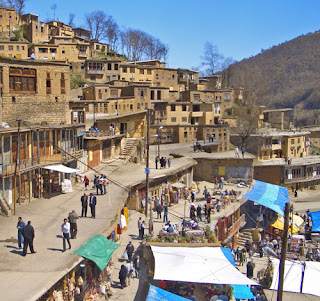The Ghaliyan - or hookah as it is more widely known - is a water pipe used for smoking tobacco. Ghaliyan is still very much a part of popular culture in Iran – in fact you see more young people smoking it than old. You can smoke ghaliyan at working-class teahouses and at traditional restaurants where it is served to your table or rug with dates, sweets and of course tea. Places like these quickly fill with the sweet aroma of scented tobacco. Many Iranians – especially young men – bring their own on mountain walks and picnics, take coals from the barbecue and share a smoke after lunching on chicken kababs.

The pipe consists of several parts; a glass jug part-filled with water, a wooden, earthenware or metal stem fitted tightly to the jug, a brazier at the top of the stem for coals and tobacco and a hose with a mouthpiece attached to the jug above water level.
When you suck the mouthpiece, air is drawn past the coals in the brazier and this heats the tobacco. Smoke from the burning tobacco is then pulled down into the water jug where it is cooled and partly filtered of tar and other impurities. After bubbling up through the water (the sound it makes gives ghaliyan its other popular western name – hubbly-bubbly) it passes through the hose.
Traditionally the ghaliyun is used for smoking plain tobacco that you can still see in bazaars in the form of dry, brown folded leaves. These leaves have to be soaked before smoking. Now though, the most popular form of tobacco is the scented, flavoured variety which comes in a sticky paste wrapped in plastic and packed into small boxes. Some popular flavours are na’ana (mint), do-sib (two apples) and portogal (orange).

© Iranvisitor.com







